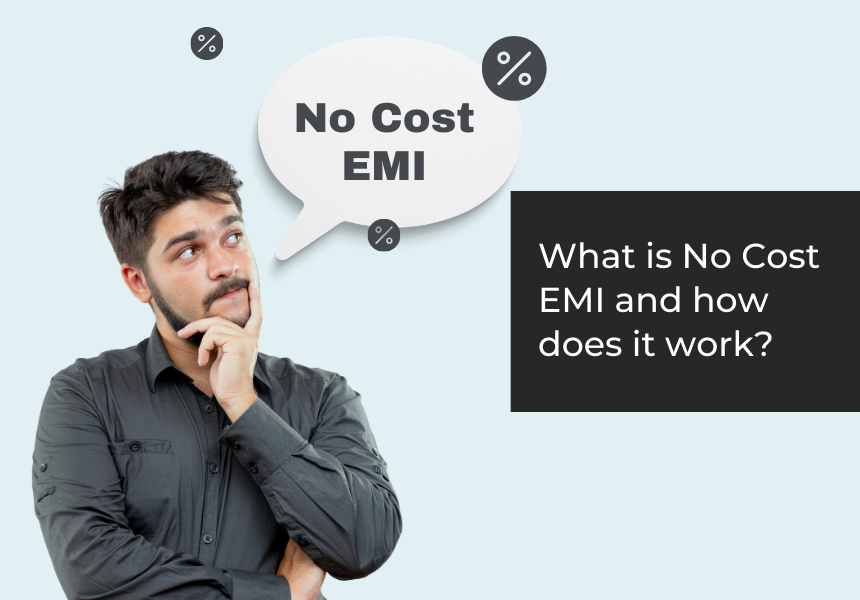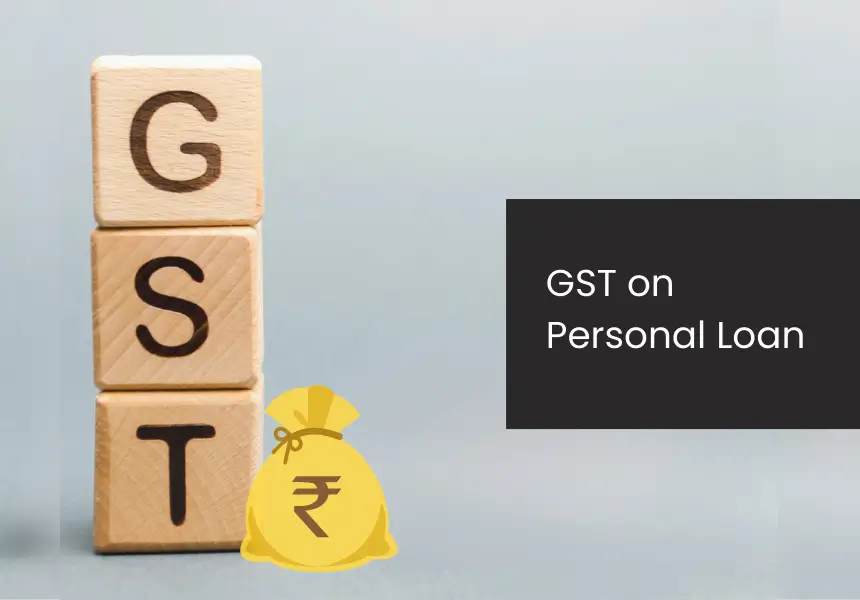
Imagine finding the perfect smartphone—a sleek design with top-tier features and everything you’ve been looking for. But the only problem? The price tag is a bit expensive. EMI, now a familiar concept, allows you to split the cost into manageable monthly payments. For instance, instead of paying ₹50,000 in one go, you could pay ₹5,000 per month over a period of ten months. This helps in making big purchases more accessible, but usually, these installments come with an interest charge that adds up to the overall cost.
Now, imagine being offered the same flexibility without the added interest, just the product’s original price, divided into easy installments. This is what no-cost EMIs are.
But how do these offers work, and are they truly cost-free? Here, we have discussed the concept of no-cost EMIs to help you understand what they offer and how they might change how you approach your next big purchase.
What is No-Cost EMI?
An EMI, or Equated Monthly Installment, is a convenient payment option that lets you spread the cost of your purchase over a set period. By making equal monthly payments, you can manage your finances more easily and avoid paying a large sum all at once.
Although the interest rate on EMI payments may vary depending on the lender, a no-cost EMI option allows you to pay your EMIs with no interest charged. This option is often available through various banks, credit card providers, and retailers. However, it is important to read through the fine print, as some additional costs may be built into the product price or involve nominal processing fees.
How Does No Cost EMI Work?
Calculating a no-cost EMI is very simple. All you need to do is divide the total price of your purchase by the length of the repayment period.
For instance, you’re buying a laptop for ₹60,000, and the seller offers a 12-month no-cost EMI option.
With the no-cost EMI, you only pay ₹60,000 divided into 12 equal monthly installments of ₹5,000, with no additional interest.
Benefits of No Cost EMI
A no-cost EMI offers multiple benefits by splitting your purchase into manageable installments, so you don’t have to pay the full amount upfront. Here are some of its benefits:
- Provides flexibility while shopping: It helps you make multiple purchases without the strain of paying the entire amount at once. Since your payments are spread out into easy monthly installments, it makes your shopping budget-friendly.
- Helps maintain a good credit score: By paying your no-cost EMIs on time, you can improve your credit score.
- Convenient Loan Access: No-cost EMI is not only a faster and easier way to secure a loan but also provides the convenience of borrowing money for people with a low credit score.
- Interest-Free Borrowing: No explicit interest payments are required for the borrowed amount.
- Low Processing Fees: The processing and documentation charges are usually nominal.
- Widespread Availability: No-cost EMIs are offered by multiple banks, retailers, and lenders, ensuring a wide accessibility.
What to Consider While Opting for No-Cost EMIs?
Here are a few things you must consider when opting for a no-cost EMI:
1. Processing fees:
Although no-cost EMI is a great way to avoid paying a large sum upfront, it’s important to note that some financial institutions might charge a processing fee. This fee might not always be clearly stated in the offer.
2. Risk of Debt Trap
With the convenience of easy financing, many people are now prone to compulsive spending. You must recognize the factors that may lead you into a debt trap. A simple rule that you can follow is to reconsider your finances if your total EMIs exceed 35% of your income.
3. Timely repayment
Making your EMI payments on time is important to maintain a good credit score. Missing a payment can negatively impact your credit rating, which could affect your chances of securing a new loan or another form of credit in the future. Additionally, late payments may result in penalty fees, adding to your financial burden.
Conclusion
No-cost EMI has changed the concept of paying for significant purchases, providing a flexible and accessible financing option. To maximize the benefit of no-cost EMIs, it’s important to thoroughly research the terms, manage repayments responsibly, and ensure the plan aligns with your financial goals.
Another alternative to managing huge expenses is by opting for personal loans. These loans come with higher loan amounts, competitive interest rates, and flexible repayment tenure.
Frequently Asked Questions
What are the eligibility criteria for availing of No-Cost EMI?
To be eligible for a no-cost EMI, you must have a good credit score and an existing credit card. However, some retailers and financial institutions also offer no-cost EMI options through debit cards or in partnership with non-banking financial companies (NBFCs).
Is there any hidden charge in No-Cost EMI?
While there’s no interest charged, some providers might include a processing fee or adjust the original price by removing discounts. You must always check the final payable amount before opting for no-cost EMI.
Do I need a credit card to avail of no-cost EMI?
While no-cost EMI is often linked to credit cards, many platforms now offer this option through debit cards, e-wallets, and NBFCs, making it accessible even without a credit card.
What happens if the product is returned or exchanged?
If you return or exchange a product bought on No-Cost EMI, the retailer usually cancels the EMI plan and refunds any amount paid, though the process may vary depending on the terms and conditions.
What is the difference between No-Cost EMI and Zero-Cost EMI?
No-cost EMI and Zero-cost EMI are often used interchangeably, both referring to EMIs without additional interest charges. However, always check for any hidden fees or conditions.








